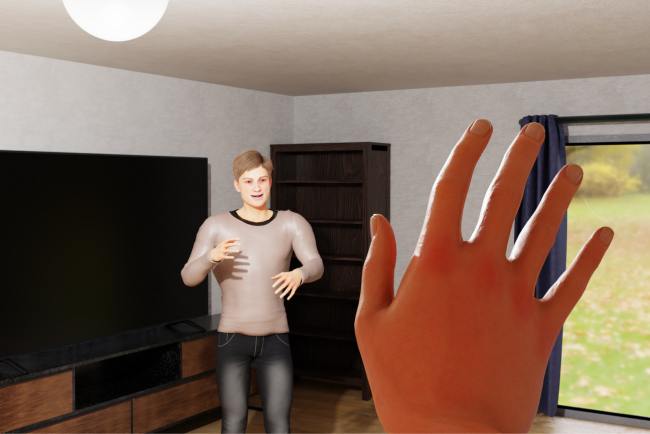Virtual reality has great potential for learning languages together.
The ability to speak a second national language is essential for communication in this language. For this reason, efforts have been made for some time to enable people with different mother tongues to practise speaking in a second national language together. In such a “language tandem”, they speak in the language that is the mother tongue of the other person and can thus receive continuous feedback on their own speaking. However, language tandems involve overcoming physical distances, which incurs time and financial costs. To save time and money, video telephony has also been used in recent years. However, this means of communication lacks a shared space in which communication can be facilitated naturally through pointing or interactive actions. In addition, video telephony often leads to exhaustion (so-called “zoom fatigue”), which can be attributed to unnatural communication. An alternative is social virtual reality (VR), which can be viewed and visited together using VR glasses that are connected to each other via the internet. In this SocialVR, people can meet in life-sized, three-dimensional everyday situations and communicate with each other both verbally and non-verbally. SocialVR can therefore be used to learn the language of the other person directly and naturally in the midst of an interactive everyday situation, despite physical distance. We have developed such a SocialVR. This SocialVR consists of a virtual apartment that can be visited and furnished together as life-sized avatars.Whereby, the furnishing of the apartment together is serving to practise talking to each other verbally.
